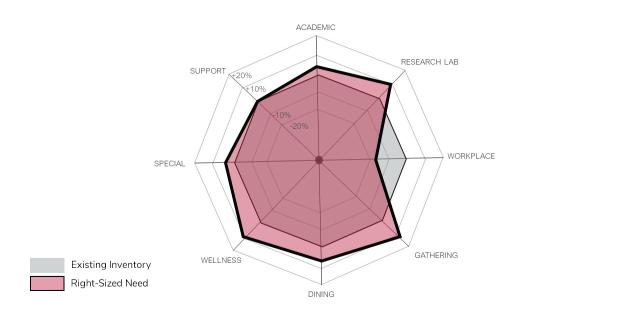Existing Space and Right-Sized Need

The resulting space needs assessment calculated a slight need in all space type categories. There were two exceptions: support space, which was appropriately sized, and workplace space, in which there is a surplus of space.
Space need projections were created for two scenarios: one showing a slight decrease in undergraduate enrollment, and one showing a slight increase in undergraduate enrollment and impacts from research growth. Anticipated space needs were reduced slightly from current needs in the first future scenario.
In the second scenario, assuming some undergraduate and research growth, the need for space increases from current values, especially in the area of research laboratories and support. Neither scenario represents a projected timeline for the university’s future. Both are hypothetical thresholds the university could cross at some point in the future and are used as planning aids.
Planning drivers for Framework 3.0 also included external factors such as:
- Growing Columbus Region
- North Knot Connection (SR-315 Interchanges at King Ave. and Kinnear Rd.)
- LinkUS Bus Rapid Transit Connector
- RAPID 5 and Olentangy River Corridor Planning
- Higher Education Landscape
- Innovation / Partnership Acceleration
- Changing Nature of Work and Learning
- Changing Nature of Discovery
- Resource Stewardship

